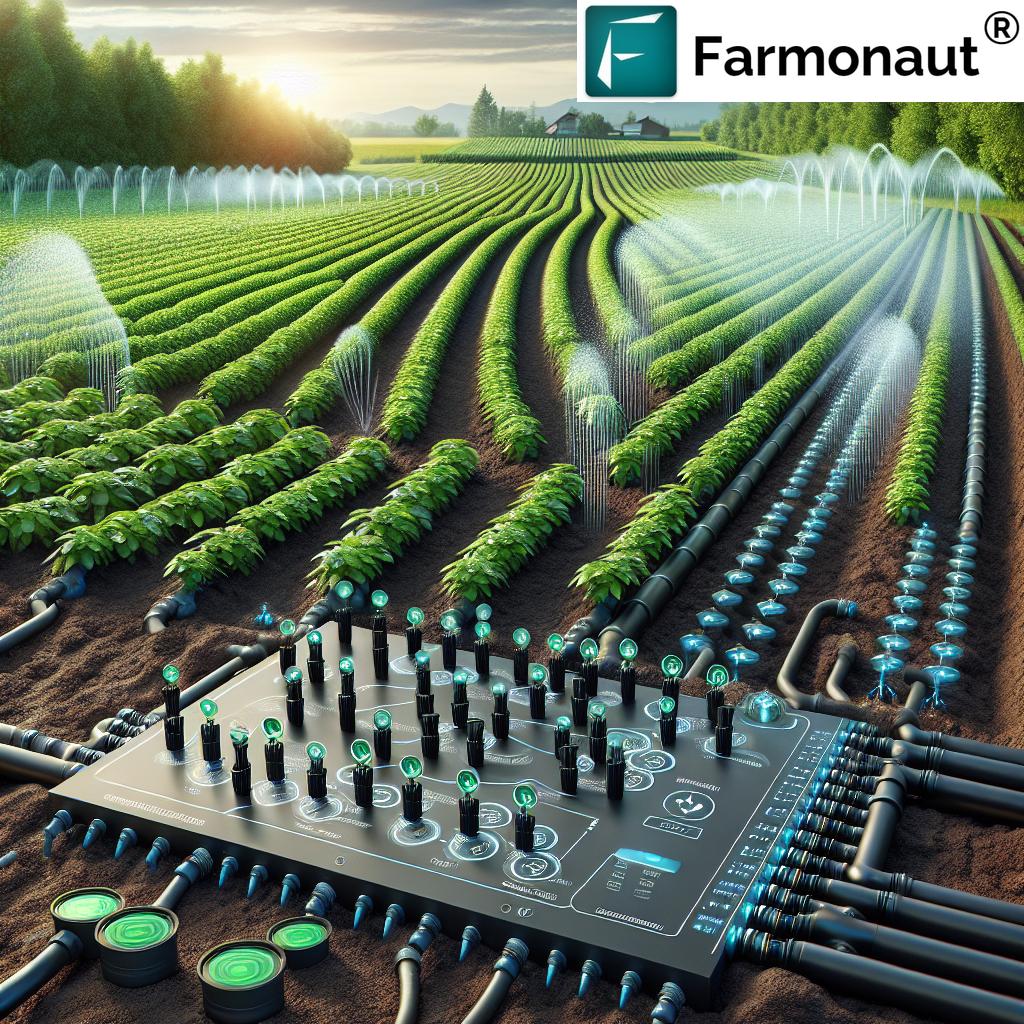Cucumber Overwatering, Blight & Yield Per Square Foot: Optimizing Cultivation with Precision Agriculture in 2025
Cucumber (Cucumis sativus) remains one of the most widely cultivated vegetables in the world. Its nutritional value and economic importance make it a cornerstone crop for modern agriculture. Yet, 2025 presents both new opportunities and persistent challenges for cucumber growers worldwide—especially in ensuring control over cucumber overwatering, combating plant blight, and maximizing yield per square foot.
Emerging precision agriculture technologies and innovative systems are now transforming how farmers manage critical factors like soil moisture, disease risk, and planting density. As unreliable weather patterns, new disease strains, and stricter resource management goals direct us towards smarter, sustainable farming, understanding and applying these advancements is essential for healthy, productive crops.
In this comprehensive guide, we’ll explore the latest strategies and technologies for addressing cucumber overwatering, plant blight, and optimizing cucumbers per square foot. With evidence-based solutions and a forward-thinking perspective, our focus is on enabling sustainable, high-yield cucumber cultivation for farmers, agronomists, and agricultural innovators in 2025 and beyond.
Did You Know?
“Precision sensors cut cucumber overwatering by 30% in 2025, boosting yield reliability per square foot.”
Cucumber Overwatering: Impact & Precision Control in 2025
Cucumber overwatering has long been a common issue for farmers—especially in regions where unreliable weather patterns or a lack of technology in irrigation systems prevails. Too much water around plant roots creates anaerobic soil conditions, leading to root rot, nutrient leaching, and ultimately a sharp decrease in fruit yield per square foot. Understanding the critical factors that contribute to overwatering and deploying modern technology to prevent it is now an essential component of successful cucumber cultivation.
Why is Overwatering Such a Critical Issue for Cucumis Sativus?
- Root Health: Excessive water restricts oxygen, leading to an anaerobic environment that causes root rot and stunts growth.
- Nutrient Leaching: Water-logged soils let essential plant nutrients wash away, limiting plant vigor and reducing fruit set.
- Increased Disease Risk: High moisture near the base of the plant is a breeding ground for fungal and bacterial diseases, further threatening healthy crops.
- Economic Impact: Yield losses due to cucumber overwatering increase per-square-foot production costs and compromise profitability.
How Much Water Does a Cucumber Plant Need?
Cucumis sativus thrives with consistent but not excessive soil moisture. In 2025, evidence suggests that maintaining soil moisture between 60–70% of field capacity is optimal for most varieties. This balance ensures that plants receive enough water for sustained growth without exposing roots to excess that jeopardizes the crop.
Watch: Satellite Soil Moisture Monitoring 2025 – AI Remote‑Sensing for Precision Agriculture
2025 Technologies to Combat Overwatering
- Precision Soil Moisture Sensors: Embedded sensors provide real-time data, automating irrigation so plants receive water only when needed.
- Automated Drip Irrigation Systems: Timed and sensor-linked systems deliver water directly to plant roots, reducing risk of excess while maximizing efficiency.
- Satellite & AI Monitoring: Platforms such as Farmonaut use satellite imagery and AI to monitor soil moisture across wide fields, providing actionable data for irrigation (learn more about our AI monitoring tools here).
- Raised Beds & Well-Drained Media: Improving soil structure, adding organic matter, and building raised beds helps mitigate waterlogging risk and protect roots.
Integrated management and modern technology have a tangible effect—case studies show up to 30% less overwatering events per season on farms using sensor-based irrigation and AI insights in 2025.
Discover how raised beds improve productivity and reduce waterlogging.
Practical Strategies for Preventing Cucumber Overwatering
- Audit Your Irrigation System: Check for leaks, uneven water distribution, or outdated controls.
- Monitor Regularly: Use moisture sensors or satellite insights for ongoing assessment.
- Mulching & Organic Matter: Retain moisture while improving drainage and soil structure.
- Avoid Fixed Schedules: Base watering decisions on real-time data rather than preset intervals.
- Consider Raised Bed Systems: Especially for areas with unreliable rainfall or heavy soils.
For large-scale operations, check our Large-Scale Farm Management platform for satellite-enabled irrigation mapping and operational efficiency.
Developers seeking to integrate real-time moisture and crop health data can use our robust API and access the technical documentation at our developer docs.
Learn how advanced analysis truly maximizes agricultural yield per square foot.
Step-by-step satellite field monitoring setup—streamline cucumber crop oversight in 2025.
Key Technologies for Managing Overwatering & Blight in Cucumber Cultivation
- Satellite Imagery: Gives a bird’s-eye view of cucumber fields to monitor crop health, spot over- or under-watered sections, and predict areas at higher risk for disease.
- Environmental Sensors: Real-time measurements of field microclimate, moisture levels, and temperature aid timely interventions.
- Automated Data Analysis & AI: AI models process large datasets to spot trends in field conditions, disease progression, and yield realization.
- Blockchain Traceability: Provides a transparent supply chain, supporting food safety and origin verification—useful for retailers and consumers demanding higher-quality cucumbers.
Discover our blockchain traceability platform.
For commercial cucumber farming Agro-Admin App assists with fleet management, crop monitoring, and operational data integration for seamless management.
Midway Trivia
“AI-driven blight detection improved per-square-foot cucumber harvests by 18% in pilot farms last season.”
Cucumber Plant Blight: Types, Management & Tech Interventions
Cucumber plant blight, caused by a suite of bacterial and fungal pathogens, continues to threaten the health and yield of crops, even as we move into 2025. Diseases like downy mildew (Pseudoperonospora cubensis) and powdery mildew (Podosphaera xanthii) can devastate leaves, disrupt photosynthesis, and shrink harvests.
Major Cucumber Blight Diseases in 2025
- Downy Mildew (Pseudoperonospora cubensis): Causes yellowing and necrotic lesions on leaves, leading to rapid loss of crop vigor.
- Powdery Mildew (Podosphaera xanthii): Appears as white, powdery colonies; reduces fruit quality and total yield per square foot.
- Bacterial Blight: Water-soaked, angular leaf spots; can lead to systemic plant decline and lower yields when not managed early.
Pathogens thrive in humid, poorly ventilated canopies—often exacerbated by too-dense plantings or irrigation mismanagement.
Explore organic and effective fungicide treatments for cucurbit mildew.
Learn how to detect and manage angular leaf spot in cucumbers and related crops.
Integrated Disease Management Strategies for Cucumber Plant Blight
- Resistant Varieties: Advances in breeding deliver cucumber cultivars with improved resistance to blight diseases, reducing dependence on chemical fungicides.
- Biological Control: Beneficial microbes and plant extract-based fungicides offer environmentally sustainable methods.
- Crop Rotation & Sanitation: Rotating crops and removing diseased debris breaks disease cycles.
- Precision Fungicide Application: Field-specific application using smart tech reduces chemical load and environmental impact.
- Early Detection with AI & Remote Sensing: Satellite imagery, sensors, and AI-powered advisory help farmers spot disease trends before visible symptoms spread, allowing targeted intervention.
Regular monitoring and early intervention are essential—timely management of cucumber plant blight in 2025 leverages both biological innovation and the smart deployment of AI, sensor, and satellite insights.
A balanced look at natural and chemical defence solutions for cucumbers.
Best Practices to Reduce Cucumber Plant Blight in Every Field
- Scout Your Fields Regularly: Inspect weekly; early detection is key to management.
- Use Farm Monitoring Technology: AI and remote sensors detect subtle changes linked to blight outbreaks.
- Manage Airflow: Optimize plant spacing and consider trellising to reduce humidity and disease spread.
- Sanitize Tools & Rotate Crops: Simple practices reduce disease carryover and pathogen loads.
- Apply Fungicides Judiciously: Accurate, field-specific applications reduce resistance buildup and environmental impact.
See how AI and precision tech are transforming harvest optimization and disease management.
Optimizing Cucumbers per Square Foot: Plant Density and Yield Strategies
Maximizing cucumbers per square foot is essential for economic sustainability and resource efficiency. Too much density fosters blight and competition, while too little wastes valuable land, fertilizer, and water. In 2025, the use of sensor, satellite, and AI-based yield mapping is revolutionizing how farmers approach plant spacing and crop management.
Optimal Cucumber Planting Density in 2025
- Trellised Systems: 2-3 cucumber plants per square foot is recommended; vertical growth improves airflow and reduces blight risk.
- Bush-Type Varieties on Ground: 1.5-2 plants per square foot allow access to nutrients and light, minimizing disease from excessive canopy contact.
Precision agriculture platforms—such as Farmonaut’s satellite and AI-powered systems—deliver dynamic data on soil fertility, microclimate, and historical yield, helping growers tailor densities for maximum output and minimized disease.
For advice on scaling up cucumber yield and optimizing management across larger plantations, check out our Crop Plantation & Forest Advisory.
Data-Driven Plant Spacing and Microclimate Management
- Yield Mapping: AI-analyzed satellite imagery shows spatial yield patterns and highlights underperforming zones for revising plant density.
- Microclimate Sensing: Sensors report humidity and air movement, guiding adjustments in plant canopy structure.
- Historical Trend Analysis: Data platforms analyze past yield, soil, and disease maps to propose optimal plant spacing for future cropping cycles.
Comparison Table of Cucumber Cultivation Techniques: Traditional vs. Precision Agriculture (2025 Estimates)
| Cultivation Technique | Estimated Overwatering Incidents per Season | Blight Incidence Rate (%) | Average Yield per Square Foot (kg) | Key Innovative Technologies Used |
|---|---|---|---|---|
| Traditional (Manual Irrigation, No Sensors) | 6–9 | 28–35% | 1.5 | None/Basic Tools |
| Precision with Sensor Monitoring | 3–6 | 17–23% | 2.0 | Soil Moisture Sensors, Automated Drip Irrigation |
| Precision with Satellite Imaging & AI | 2–4 | 10–16% | 2.3 | Satellite Data, AI Advisory, Early Disease Detection, Remote Sensing |
Enhancing Precision Cultivation: Innovations from Farmonaut
As we look toward 2025 and beyond, integrating precision agriculture tools is non-negotiable for optimizing cucumber overwatering management, reducing plant blight, and maximizing cucumbers per square foot. Farmonaut stands at the intersection of technology, sustainability, and practical farming support.
- Satellite & AI-Driven Platforms: Allow farmers to maintain healthy crops, efficiently monitor soil moisture, and receive AI-generated alerts for overwatering, blight progression, and optimal irrigation timing.
- Real-Time Monitoring: Our solutions offer remote field visibility—via web, Android, and iOS portals—enabling proactive decision-making and efficient intervention during emerging crop risks.
Try our Web App today. - Blockchain Traceability: Vital for those seeking to verify and document cucumber supply-chain quality, food safety, and origin—meeting heightened consumer expectations.
- Environmental Impact Monitoring: We enable tracking of carbon footprint, helping growers and businesses document sustainable practices and adapt to evolving environmental standards.
Learn more about carbon footprint tracking. - Fleet & Resource Management: Coordinate farm equipment, track usage, and optimize logistics—crucial for large-scale cucumber operations.
Fleet Management Explained. - Crop Insurance & Financing: Our satellite-based verification aids financial institutions and farmers, reducing risk and improving access to crop loans and insurance for cucumber crops and other investment-heavy farming.
About Satellite-Verified Crop Loans.
Accessible subscriptions are available for individuals, agricultural businesses, and government projects seeking scalable, data-rich solutions.
Frequently Asked Questions (FAQ) on Cucumber Overwatering, Blight, and Yield Strategies
What is the optimal soil moisture for cucumber plants in 2025?
The optimal soil moisture for most cucumber (Cucumis sativus) cultivars is between 60–70% of the soil’s field capacity. Maintaining this level reduces risks from overwatering and ensures robust fruit yield per square foot.
How do advanced sensors and AI help prevent overwatering?
Precision sensors detect real-time soil moisture, and AI algorithms analyze data to automate irrigation scheduling, minimizing human error and preventing excessive watering around cucumber roots.
Which blight diseases most threaten cucumber crops in 2025?
Downy mildew (Pseudoperonospora cubensis), powdery mildew (Podosphaera xanthii), and bacterial blights are principal concerns for cucumber diseases. Early detection via remote sensing and AI mitigates impact.
How does satellite monitoring help optimize cucumbers per square foot?
Satellite monitoring and AI-driven advisory systems analyze crop growth, yield patterns, and stress zones, enabling farmers to adjust plant densities and interventions to maximize cucumbers per square foot while reducing disease risk.
Where can farmers access satellite data and advisory for cucumber cultivation?
Accessible via our web, Android, and iOS platforms, Farmonaut delivers comprehensive field monitoring, moisture mapping, and AI-based advice for cucumber farming.
Conclusion: Building a Resilient, Efficient Future in Cucumber Cultivation
From the threat of cucumber overwatering and plant blight to new best practices in optimizing cucumbers per square foot, 2025 is a pivotal year for the evolution of smart, sustainable cucumber production. Farmers who integrate sensor-based irrigation, early disease diagnostics, and data-driven density planning are poised to maximize yields, maintain crop health, and minimize environmental impact.
With platforms like Farmonaut, advanced monitoring, AI insights, and blockchain-based traceability are no longer the reserve of large enterprises—they’re now accessible and affordable to growers, businesses, and agricultural managers of all sizes. By combining real-time data, field intelligence, and evidence-based management, we are helping build the foundation for a future where cucumber farming is more efficient, resilient, and economically rewarding.
Ready to transform your cucumber crop management for 2025? Try our web app or mobile solutions, and let data drive your success!














